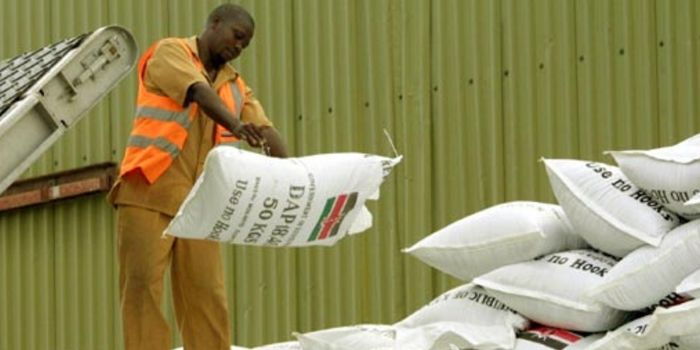The East Africa Community (EAC) has unveiled new plans to lower fertiliser prices, a critical farming input, following the failure of previous interventions by the Government of Kenya to yield a significant impact in line with prices in international markets.
According to a notice from the Competition Authority of Kenya (CAK) published in the Gazette Notice on Friday, the East African Community (EAC) announced plans to invite public participation in its new efforts to reduce fertiliser prices.
The exercise will be done on behalf of the EAC Competition Authority by the CAK and will invite several market stakeholders and Kenyan farmers to help provide feedback on how the price reductions could be achieved.
”The high prices are detrimental to the farmers, and to governments which have chosen to subsidize fertilizer prices. Furthermore, there are high levels of market concentration, behavioural practices, and high barriers to entry, among others,” CAK stated.
A hand holding fertiliser
Photo
Canva
”Thus, it necessitates competition assessment of this market in the EAC region, specifically in Kenya, Tanzania, Uganda, Rwanda, Burundi, and the Democratic Republic of Congo.”
The EAC Competition Authority noted that it was concerned after fertiliser prices, which spiked in 2021 globally, failed to drop in local markets in recent months despite a significant drop being recorded globally.
“Fertilizer prices across the region increased along with international prices in late 2021. However, they have not reduced in line with the prices in international markets,” read the notice in part.
The government outlined several strategies aimed at reducing fertiliser prices. These include analysing fertilizer trading patterns, such as relevant products and geographic markets, as well as monitoring imports, ports of entry, and the distribution and supply chains within the East African Community (EAC).
The government will also assess the market structure and concentration levels of entities involved in the fertilizer supply chain, including importation, blending, manufacturing, distribution, and supply within the EAC.
Additionally, the government intends to analyse the cost components and price patterns of fertilizer over five years in the industry value chain (between manufacturers, importers, distributors, and suppliers).
Meanwhile, to achieve the drop in fertiliser prices, the government will invite Kenyans to provide their views to establish if there are anti-competitive practices in the industry value chain of the fertilizer sector and take appropriate action as per the EAC Competition Act.
Fertilizer subsidy programmes by the government saw the prices of the farming input reduce from Ksh3400 per 50kg bag to Ksh2500. However, this is largely viewed as an interim stop-gap measure because the prices could likely revert to the initial higher prices in case the subsidy is lifted.
The government last intervened in fertilizer pricing in 2022, aside from the ongoing subsidy program, when then-Agriculture Cabinet Secretary Peter Munya announced a review that aimed to reduce costs significantly. The price of DAP fertilizer was lowered to Ksh 2,800 from Ksh 6,000, with enough supply to cover 1 million acres owned by smallholder farmers across the country.
Other price adjustments included CAN fertilizer, which was reduced to Ksh1,950 from Ksh3,900; UREA, priced at Ksh2,700, down from Ksh6,500; NPK, which dropped to Ksh3,000 from Ksh4,900; MOP, now selling for Ksh2,500, down from Ksh3,800; and Sulphate of Ammonia, priced at Ksh2,500, reduced from Ksh3,800.
Offices of the Kenya National Cereals and Produce Board.


